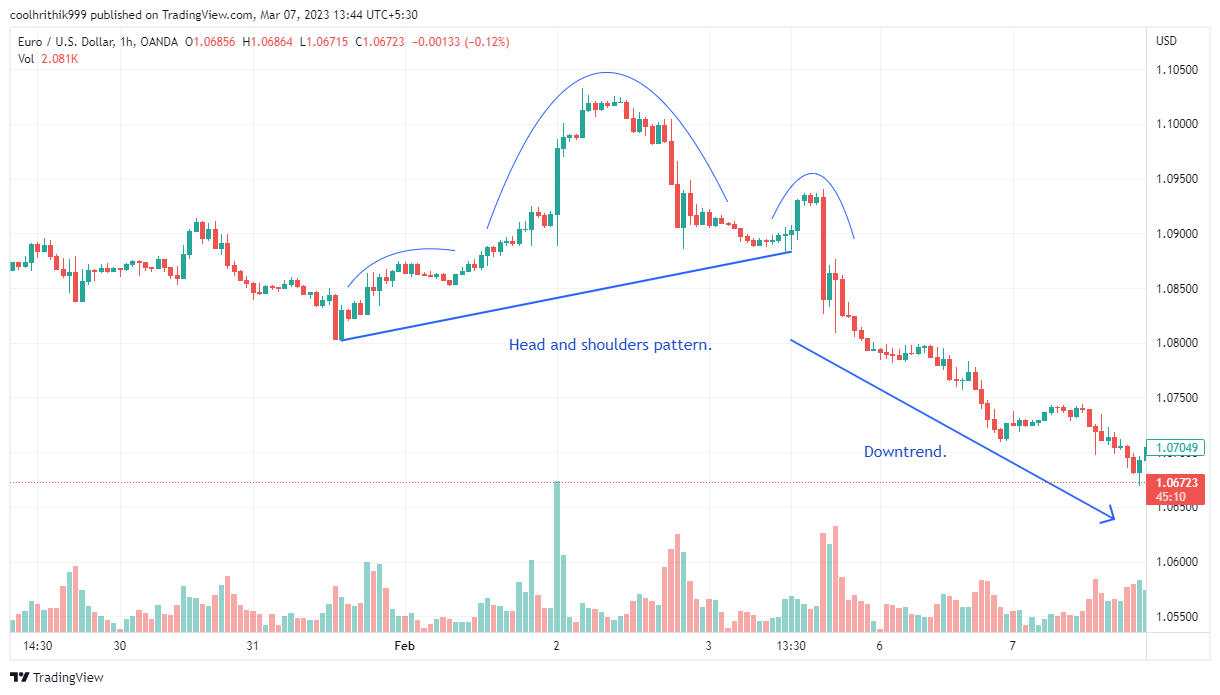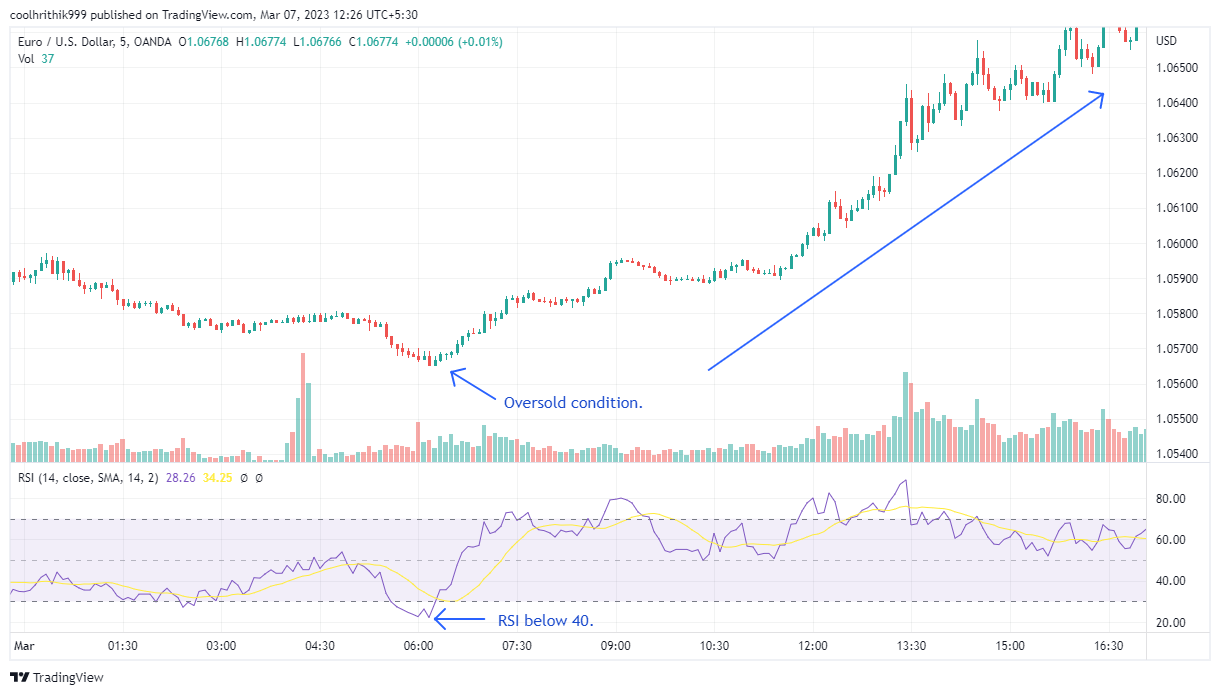Understanding Bull Markets in Stock Trading
A bull market is a financial market in which prices are rising or expected to rise. It is characterized by optimism, investor confidence, and increased investment.
Bull markets in stock trading refer to sustained periods of rising stock prices. This is the opposite of bear markets, which are characterized by decreasing stock prices. Bull markets typically happen in periods of economic expansion and investor confidence, where investors are confident that stock prices will continue to rise. The length of a bull market can vary significantly, ranging from weeks to years. It is important to understand the characteristics of a bull market in order to take advantage of stock market opportunities.
Start trading Forex and Stocks now with RoboForex!Characteristics of a bull market
Rising asset prices, investor optimism, and strong economic indicators are the primary characteristics of a bull market. A bull market is an extended period of time in which stock prices rise, typically accompanied by strong investor confidence and an overall optimistic outlook for the economy. Generally, a bull market is seen as a sign of a healthy, growing economy.
During this period, stock prices rise significantly as investors are willing to take on more risk. This increased demand for stocks pushes prices higher.
Investor sentiment is an important characteristic of a bull market. Investors become more optimistic and are willing to take on more risk. This increased demand for stocks pushes prices higher, as investors believe there are more opportunities to make a profit in the stock market. This optimism can also lead to increased trading activity, as investors are more willing to buy and sell.
Strong economic indicators are often seen in bull markets. Economic indicators such as gross domestic product, unemployment rate, and inflation rate are all important indicators of the health of an economy. During a bull market, these indicators show signs of improvement, signaling a strong economy. As a result, investors become more confident in their investments and are willing to invest more capital into the stock market.
In addition to the characteristics listed above, another important factor in a bull market is the availability of liquidity. Liquidity refers to the ability of investors to access cash quickly and easily. In a bull market, there is often an increased availability of liquidity, which allows investors to buy and sell stocks quickly and easily. This increased liquidity can lead to further gains in stock prices.
The combination of rising asset prices, investor optimism, strong economic indicators, and increased liquidity is what drives a bull market. This combination creates a positive feedback loop, allowing stock prices to continue to rise. As stock prices rise, investors become more confident and are willing to take on more risk, which in turn leads to further increases in stock prices. This cycle is what makes bull markets so lucrative for investors.
Top 3 related terms
Liquidity. Liquidity in Forex, the availability and ease of buying or selling a currency pair, is crucial in a bull market as it allows traders to swiftly capitalize on rising prices. High liquidity means trades can be executed without significant price impact. It’s good to be mindful that liquidity can fluctuate during prolonged periods of bullishness.
Technical Analysis VS Fundamental Analysis. Technical analysis predicts future prices by studying historical price and volume data, focusing on patterns and indicators in charts. Fundamental analysis evaluates an asset's intrinsic value by examining financial data, economic factors, geopolitical landscape and qualitative information.
Arbitrage. Arbitrage is a trading strategy that involves taking advantage of price discrepancies for the same asset in different markets. In Forex, this could involve buying a currency pair in one market where it's currently undervalued and simultaneously selling it in another market where it's currently overvalued, profiting from the price difference.
What drives a bull market?
A variety of factors contribute to the formation of a bull market. Positive news, corporate earnings, and government policies all play a role. Positive news can range from reports of improved economic indicators to corporate mergers, acquisitions, and partnerships. Corporate earnings are particularly important as they directly impact the stock market. Strong earnings can lead to increased stock prices and investor confidence. Government policies, such as reduced taxes or interest rate cuts, can also encourage investment and drive up stock prices.
Investors and traders should be aware of the underlying catalysts driving a bull market so that they can make informed decisions on when to enter and exit the market. Fundamental analysis is an important tool as it allows investors to gain an understanding of a company's financial performance and health. On the other hand, technical analysis is useful in evaluating the direction of the market and analyzing trends.
Having the right strategies for trading in a bull market is key to success. It is important to use risk management strategies such as stop-loss orders and to have a well-diversified portfolio. In addition, investors should be prepared to take advantage of the market's upward momentum by investing in stocks with high growth potential. Finally, investors should stay informed of the current market conditions and be ready to act quickly on any new information.
Understanding the factors and catalysts that drive a bull market helps investors develop the right strategies for success and maximize their profits. One shouldn’t underestimate the importance of knowledge about the market, using technical and fundamental analysis, and taking advantage of the market's upward trend. With the right strategies, investors can capitalize on a bull market and maximize their returns.
Strategies for trading in a bull market
Investors looking to capitalize on a bull market should understand the strategies involved to help maximize their returns. To achieve this, investors need to consider a variety of techniques that can help them capitalize on the positive market conditions. These strategies include:
Long Positions. Buying stocks and holding them for an extended period of time, with the hope that the stocks will appreciate in value, is known as a long position. This is a popular strategy in a bull market.
Trend Following. This involves following the upward trend of the market and buying stocks when they show signs of rising prices.

Trend Following Strategy
Short Positions. Selling stocks before they are bought is known as a short position. This strategy is risky, as there is no guarantee that the prices of the stocks will fall.

Short Positions Strategy
Momentum Trading. This involves buying stocks that have already gained in value and selling them when they begin to lose their momentum.
Arbitrage. This involves taking advantage of price discrepancies in stocks to make a profit.
When trading in a bull market, investors should also take into account the implications of a bear market. They should be aware that a bear market could cause their investments to decline in value and should consider strategies to protect their capital. Additionally, investors should always keep an eye on the news and be aware of any major events that could affect the market.
It is important for investors to understand the risks associated with trading in a bull market. They should take the time to research the strategies they are considering, and never invest more money than they can afford to lose. In addition, investors should be aware of the fees associated with their trades and understand the tax implications of their investments. By understanding the risks and strategies involved, investors can make informed decisions and maximize their returns in a bull market.
Best stock brokers 2024
Conclusion
A bull market is a period of time in which stock prices are rising and investor confidence is high, creating a positive outlook for the future of the stock market. Understanding the characteristics of a bull market, what drives it, and the strategies for trading in a bull market are essential for successful stock trading.
It is typically characterized by a sustained rise in stock prices, increased investor optimism, and higher trading volumes. Factors such as increased consumer confidence, a strong economy, and easy access to credit can all contribute to the development of a bull market.
Effective strategies for trading in a bull market include focusing on stocks with strong fundamentals, diversifying investments, and setting appropriate stop losses. Understanding and utilizing the principles of bull markets increases the chances that investors can maximize their returns.
FAQ
What is the opposite of a bull market?
The opposite of a bull market is a bear market. During a bull market, assets tend to experience a continual increase in prices. During a bear market, the opposite is true.
How long can a bull market last?
The duration of a bull market varies, but they can last for several months to several years. Historically, bull markets have typically lasted 2-3 years on average, but some have extended longer.
Is it safe to invest in a bull market?
Investing in a bull market can be profitable, but it's essential to exercise caution and diversify your portfolio. Overconfidence and excessive risk-taking can lead to losses if market conditions change.
Can a bull market turn into a bear market suddenly?
Yes, a bull market can turn into a bear market suddenly due to various factors, such as economic downturns, geopolitical events, or unexpected market shocks. It's important for investors to be prepared for market reversals and have a risk management strategy in place.
Glossary for novice traders
-
1
Broker
A broker is a legal entity or individual that performs as an intermediary when making trades in the financial markets. Private investors cannot trade without a broker, since only brokers can execute trades on the exchanges.
-
2
Investor
An investor is an individual, who invests money in an asset with the expectation that its value would appreciate in the future. The asset can be anything, including a bond, debenture, mutual fund, equity, gold, silver, exchange-traded funds (ETFs), and real-estate property.
-
3
Trading
Trading involves the act of buying and selling financial assets like stocks, currencies, or commodities with the intention of profiting from market price fluctuations. Traders employ various strategies, analysis techniques, and risk management practices to make informed decisions and optimize their chances of success in the financial markets.
-
4
Bear market
A bear market is a period of time in which an investment asset, such as stocks, bonds, or commodities, experiences a decline in price for an extended period of time.
-
5
Fundamental Analysis
Fundamental analysis is a method or tool that investors use that seeks to determine the intrinsic value of a security by examining economic and financial factors. It considers macroeconomic factors such as the state of the economy and industry conditions.
Team that worked on the article
Vuk stands at the forefront of financial journalism, blending over six years of crypto investing experience with profound insights gained from navigating two bull/bear cycles. A dedicated content writer, Vuk has contributed to a myriad of publications and projects. His journey from an English language graduate to a sought-after voice in finance reflects his passion for demystifying complex financial concepts, making him a helpful guide for both newcomers and seasoned investors.
Dr. BJ Johnson is a PhD in English Language and an editor with over 15 years of experience. He earned his degree in English Language in the U.S and the UK. In 2020, Dr. Johnson joined the Traders Union team. Since then, he has created over 100 exclusive articles and edited over 300 articles of other authors.
Mirjan Hipolito is a journalist and news editor at Traders Union. She is an expert crypto writer with five years of experience in the financial markets. Her specialties are daily market news, price predictions, and Initial Coin Offerings (ICO).











